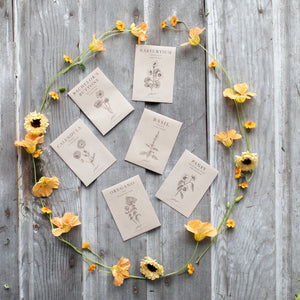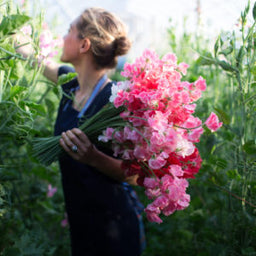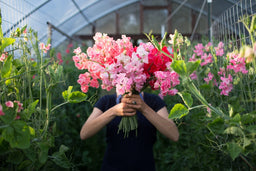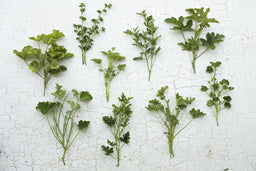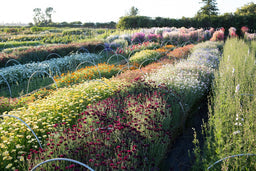
Sweet Pea ‘Sylvestris’
Lathyrus sylvestris
Description
This perennial sweet pea has vigorous, scrambling vines smothered in small clusters of dusty-mauve flowers with a smoky-lavender throat. The unique color combination gives flowers an almost metallic quality. While the flowers don’t have much fragrance, and their stems are on the shorter side, they are worth growing for their unusual coloring and ability to double as a foliage.
Please note: Unlike garden peas, sweet pea seeds are poisonous if ingested. Use caution around children and pets.
Details
Height: 6 to 8 ft
Site: full sun
Days to maturity: 75 to 90 days
Plant spacing: 18 to 36 in
Pinch: not necessary
Seed Sowing & Growing Notes
In mild areas, seed can be sown in pots in the fall, overwintered in a sheltered spot, and planted out in spring. Everywhere else, sow seed 10 to 12 weeks before last frost and transplant out right around last frost. Provide a strong trellis or support for vines to climb.
Harvesting/Vase Life
Details
Description
This perennial sweet pea has vigorous, scrambling vines smothered in small clusters of dusty-mauve flowers with a smoky-lavender throat. The unique color combination gives flowers an almost metallic quality. While the flowers don’t have much fragrance, and their stems are on the shorter side, they are worth growing for their unusual coloring and ability to double as a foliage.
Please note: Unlike garden peas, sweet pea seeds are poisonous if ingested. Use caution around children and pets.
Details
Height: 6 to 8 ft
Site: full sun
Days to maturity: 75 to 90 days
Plant spacing: 18 to 36 in
Pinch: not necessary
Seed Sowing & Growing Notes
In mild areas, seed can be sown in pots in the fall, overwintered in a sheltered spot, and planted out in spring. Everywhere else, sow seed 10 to 12 weeks before last frost and transplant out right around last frost. Provide a strong trellis or support for vines to climb.
Harvesting/Vase Life
Sources
How to Grow
How to Grow
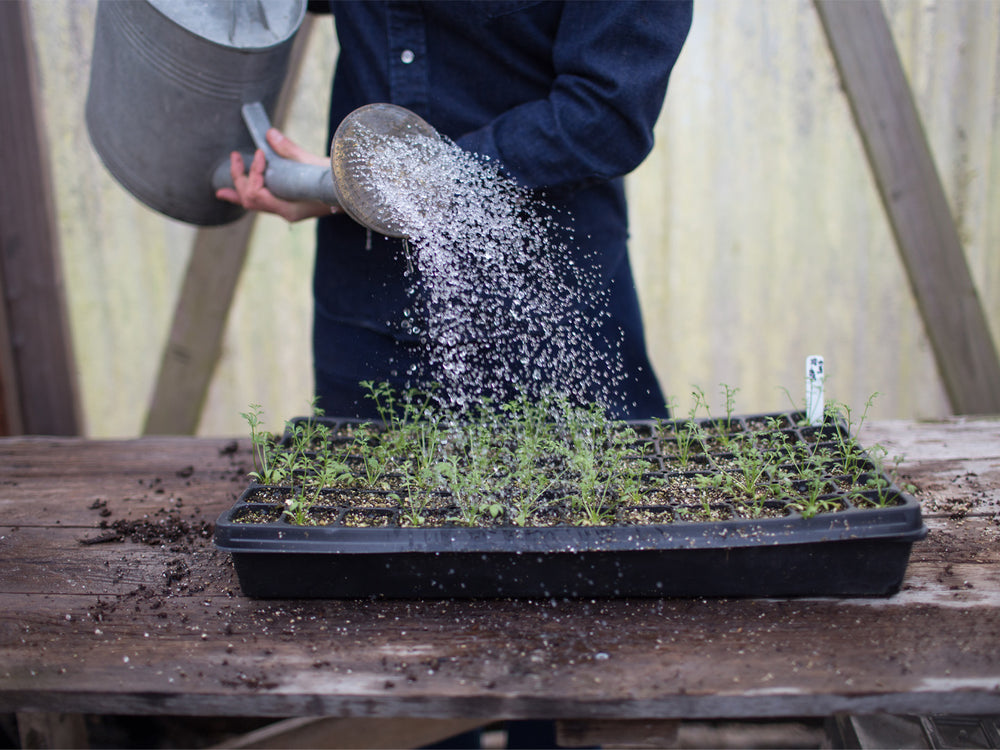
Winter Mini Course: Seed-Starting 101
Learn how to start flowers from seed in this three-part video series
In our upcoming Winter Mini Course, you’ll learn everything you need to know to successfully start flowers from seed, including all of the necessary supplies, step-by-step instructions, special tips and tricks, and how to create a simple indoor seed-starting area.

